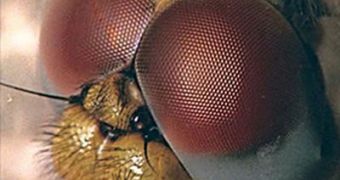Insects have been a long-time inspirational source for camera developers worldwide, because of the way their eyes are structured. Most insects have dozens of eyes that catch a wide array of images, which are then converted by the brain into the big picture. Flies can see almost 360 degrees around them, an ability that allows them to beware of the dangers their habitats imply.
For example, mosquitoes can see the entire room if they are sitting on a vertical wall. This makes it difficult to catch them. They evolved this defense mechanism for protection, as other bodily features, such as mass, size and strength, don't really benefit them to any extent. Speed and near-perfect vision are the only two advantages they have on their predators.
Scientists have been trying to mimic insect eyes for a very long time, but, until now, no conclusive or successful results were reached. The problem was that the obtained images had a very poor resolution and that the "delivery" system for these cameras, usually rotating platforms, was very large and contained mechanical parts that could malfunction at any time.
Recently, BAE System expert Leslie Laycock, working from Great Baddow in the UK, led a team of scientists that was able to counteract these problems by simply "sculpting" the multi-faceted eyes at the end of a million fiber optic cable, which were previously fused together. The"eyes" sent luminous signals through the fibers to an optic center, which used a microprocessor and a piece of software to decipher and then stitch the images together.
This new invention has extended potential applications, ranging from military to medicinal use. Rockets equipped with the sugar-cube-sized receptor could identify targets over a wider area and hit them more accurately. On the other hand, during surgery, doctors could get a better view of the area they are working on, which could help improve statistics a great deal. It remains to be seen when the new invention will be placed into widespread use.

 14 DAY TRIAL //
14 DAY TRIAL //